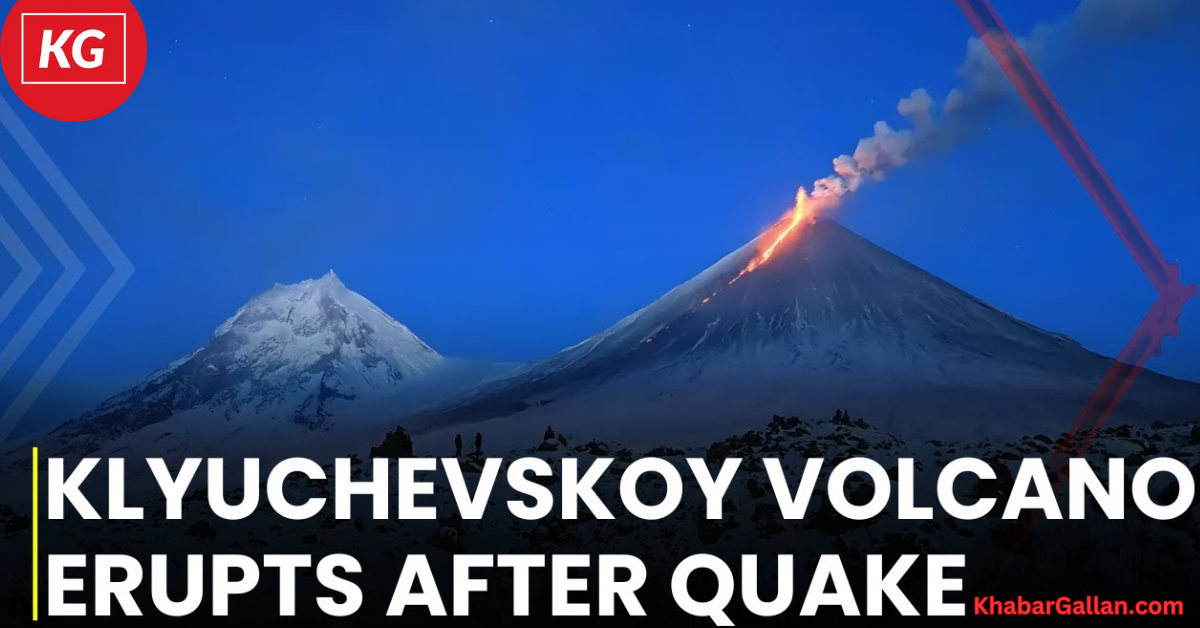On July 30, 2025, the remote Kamchatka Peninsula in Russia’s Far East was struck by a powerful magnitude 8.8 earthquake—the strongest in the region since 1952. Within hours, Klyuchevskoy volcano—Eurasia’s tallest active volcano—erupted spectacularly, sending lava and ash soaring into the sky amid tsunami alerts that rippled across the Pacific.
1. A Quake That Reverberated Across Oceans
The quake struck just southeast of Petropavlovsk‑Kamchatsky, at a shallow depth of approximately 19 km. It sparked tsunami warnings as far away as Japan, Hawaii, Chile, and the Galápagos Islands. In Severo‑Kurilsk, waves up to 4 m swept ashore, flooding infrastructure and displacing communities.
Despite widespread evacuations, including nearly two million people in Japan, no major casualties were reported. Several injuries occurred in Russia and Japan, largely tied to panic and evacuation efforts.
2. Eruption Unleashed: Klyuchevskoy’s Fiery Response
Just hours after the quake, Klyuchevskoy volcano, rising around 4,750 m above sea level, began erupting. The Russian Academy of Sciences reported “burning hot lava descending the western slope, a powerful glow above the crater, and explosions” visible from afar.
Incandescent lava coursed down its side, while ash plumes climbed between 3 km to over 6 km into the sky—enough to disrupt aviation and raise the color-coded alert to Orange or even Red.
Satellite and webcam footage confirmed the eruption, along with the shocking sight of a newly formed volcanic cone added to its many secondary craters.
3. Why Now? Science Behind the Trigger
While Klyuchevskoy had already been showing signs of volcanic unrest—incandescence and minor ash emissions had elevated the alert level since April—experts believe the quake intensified the eruption process. Though not the initial trigger, the seismic shock accelerated lava movement and ash venting.
Kamchatka lies squarely on the Pacific Ring of Fire, where tectonic plates regularly collide. This region regularly hosts powerful quakes and volcanic activity in close succession—a geological domino effect we witnessed fully in this case.
Scientists also noted over 200 earthquakes in just 24 hours, culminating in new cone formation and ash reaching flight level 200 (about 6 km) moving eastward.
4. Local and Global Impact
In Kamchatka, ashfall reduced air quality and visibility; local buildings, including schools and daycare centers, suffered structural damage. Power outages were widespread in smaller towns near the quake epicenter. Emergency services rapidly deployed to assess and secure affected areas.
Air traffic across the North Pacific was disrupted, with flights delayed or rerouted due to the ash cloud. The aviation color code was elevated to alert aircraft over a large swath of the region.
Globally, the sequence of disasters—from quake to tsunami to volcanic eruption—underscored the linked dynamics of seismic and volcanic hazards, particularly in plate-boundary zones. Evacuation orders and red alerts were issued in countries from Japan to Chile; most were later downgraded as waves proved less destructive than feared.
5. Lessons from Kamchatka: Nature’s Warning System
- Proximity matters: At only ~450 km from Petropavlovsk‑Kamchatsky, Klyuchevskoy’s eruption happened in a populated but sparsely settled area—minimizing human casualties but highlighting vulnerability.
- Chain reactions: Monitoring one hazard (earthquake) closely enabled faster response to another (eruption). Integrated systems in tectonically active zones save lives.
- Preparedness pays: Strong building codes and prompt evacuations in Russia and Japan limited the loss of life despite powerful natural forces.
Conclusion: A Volcanic Finale to a Seismic Prelude
The unfolding events in Kamchatka on July 30, 2025, revealed a rare confluence of nature’s most dramatic forces: a devastating earthquake, tsunami waves across oceans, and the blaze of Russia’s tallest volcano. While the region has long been on scientific watch lists, this day’s events underscored the urgency of coordinated global monitoring and preparedness.












Leave a Reply